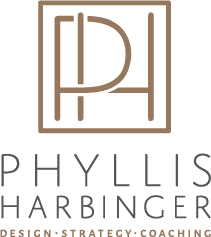Tactical tips to Differentiate your Business and the Best Way to Attract and Keep Clients for Life!
In my last ASID Workshop in November, the topic was Differentiation. I began by showing a few different dolls listed on Amazon and asking the group to write down why one was so much more expensive than the other two.
We went through a number of characteristics and then went on to discuss a few salient points: Content, Culture, and Context. This is how you differentiate your offerings from your competition. While the dolls were relatively the same in many ways, why would you spend more than double for the most expensive doll?
The doll was an American Girl model. Any of you who know the story of this doll, know why. The “secret sauce” is not the doll, but the culture that the company created. They support the physical doll with both intangible and tangible add-ons and experiences. She has a name, a history, can wear many outfits, play with other American girl counterparts but that is not the best part. The store, the café, the parties and being a member of this community, is what has drawn tweens and their moms and friends to this phenomenon.
So, you may ask, why am I speaking to the design community about dolls? Because the message is the same. There are many designers, but you have to find your differentiator. Why should people hire you?
We explored a number of case studies on differentiation that evening, and the group all came up with wonderful ways in which to become indispensable to their clients and recognize their “special sauce.” I am super excited for them to dive deeper and add these tactics to every aspect of their business. It needs to be present in your marketing, your branding, your office culture, your messaging – email, phone, live meetings and of course, your social media.
We know that people are always looking for value. Most of the time, it is not about what they know they want and need, but it is found in the extras that they did not know they wanted or needed. Most of you reading this article are not the most inexpensive designers a client might interview. What is it that you offer that gives you the edge? Click HERE to read on about providing value that keeps your clients coming back for more.
People are willing to pay for quality and an experience, something that is measurable, but what can you offer that is intangible? Value is what we perceive as a return on investment (ROI). This can be subjective, just like taste, but it is the experience and the culture you create that sets you apart from others and increases your value.
Your reputation has most certainly been responsible for your evolution as a designer. While there are many competent designers, you may be receiving referrals for your unique brilliance in the way in which you conduct your business. The culture of your firm, the relationships you build with your vendors and trusted partners, and most importantly, how you and your team make your clients feel during the design process and the results you offer.
Your competency will set you apart, for sure. The challenge is communicating your skill sets to new clients— this is where reviews come in handy. A good reputation for competent work is earned over time, but once you have it, you’ll have a better chance of being chosen over your competitors.
I recently landed the biggest client of my career. I was referred by one of my private clients, who raved that I was the only designer she knows (and she knows many through her work) who stays on budget, meets deadlines and delivers on promises and completed projects on time. This was why she referred me to one of her biggest clients and I am beyond honored.
Designers sell professional services and create environments for their clients. People who own BMWs would never drive anything else. I love going to Rene Caovilla for shoes when in Italy because of the quality and the amazing boutique experience. The companies you love have worked hard to build their brands, and because of that, they’ve established trust.
Clients will choose to work with a trusted brand or firm, because they know what they’re going to get, and that’s a comfort. Having a great brand is a powerful competitive advantage. And yet, even a great brand is transitory. And so are all of the other competitive advantages that I have mentioned above that can differentiate your offerings from those of other design firms.
So, how do you differentiate your offerings? My theory, as a design principal, is that you do what you say you’re going to do and always honor your deliverables. Act responsibly and fairly. Enjoy the journey and always look to give your clients what they want and need and then exceed their expectations with intangibles. Be consistent in your messaging, marketing, communications and culture, and you’ll never have to worry about succeeding. There’s a shortage of businesses that embrace differentiation!

